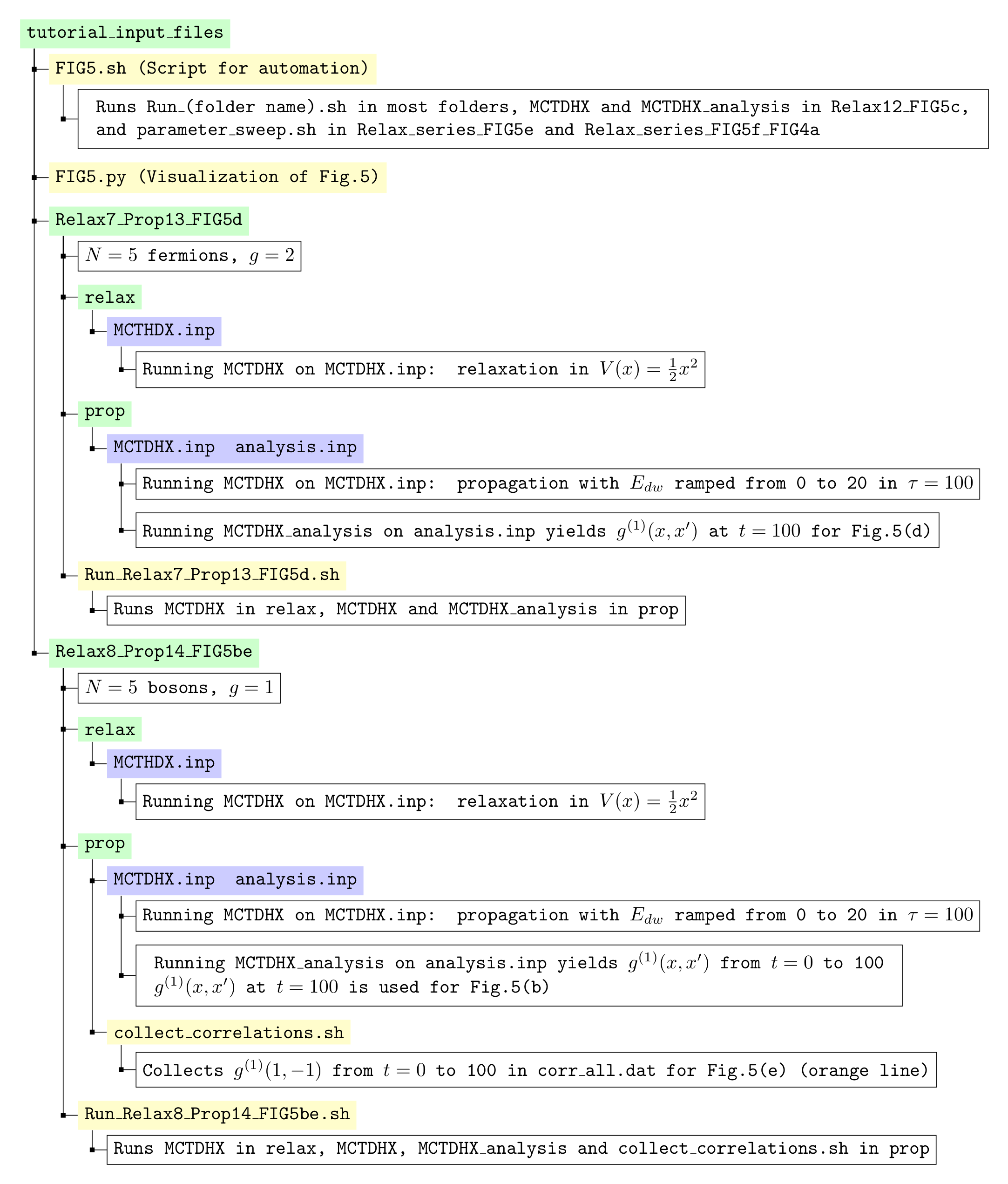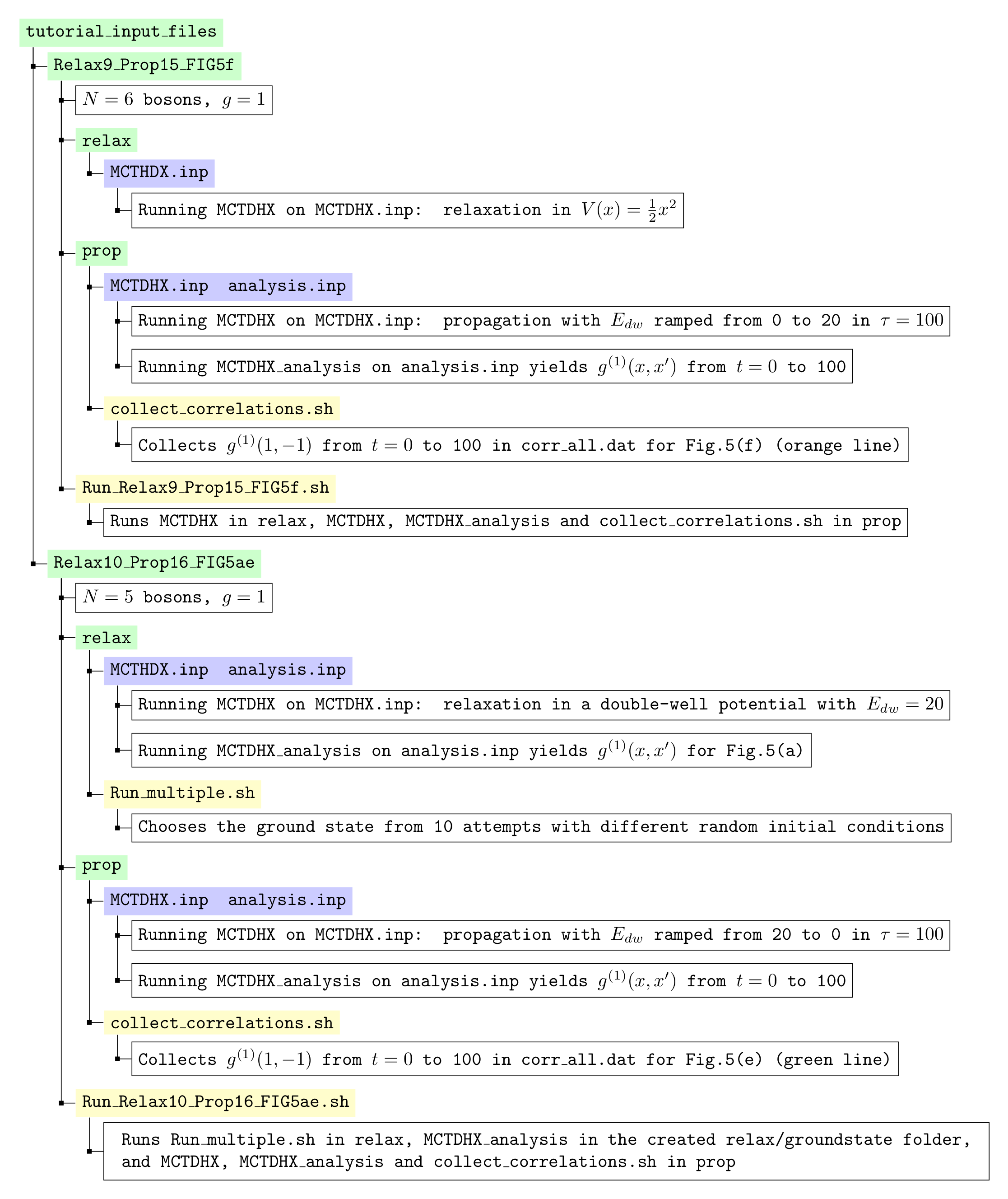Figure S4:
Files in tutorial_input_files.zip necessary to reproduce the results in Fig. 5 of the main text (part 1/3). By executing the command ./FIG5.sh (or ./FIG5.sh X, with X the number of parallel processes), all the results of Fig. 5 can be obtained and the figure can be plotted.
The background colors indicate whether it is a folder (green), an input file (purple), an executable (yellow), or an explanation (white). Here, SSI is short for single-shot images. The input file analysis2.inp is used for the supplementary movie. The input files can be downloaded at http://ultracold.org/data/tutorial_input_files.zip.
 |
Figure S5:
Files in tutorial_input_files.zip necessary to reproduce the results in Fig. 5 of the main text (part 2/3). By executing the command ./FIG5.sh (or ./FIG5.sh X, with X the number of parallel processes), all the results of Fig. 5 can be obtained and the figure can be plotted.
The background colors indicate folders (green), input files (purple), executables (yellow), and explanations (white). Here, SSI is short for single-shot images. The input file analysis2.inp is used for the supplementary movie. The input files can be downloaded at http://ultracold.org/data/tutorial_input_files.zip.
 |
Figure S6:
Files in tutorial_input_files.zip necessary to reproduce the results in Fig. 5 of the main text (part 3/3). By executing the command ./FIG5.sh (or ./FIG5.sh X, with X the number of parallel processes), all the results of Fig. 5 can be obtained and the figure can be plotted.
The background colors indicate folders (green), input files (purple), executables (yellow), and explanations (white). Here, SSI is short for single-shot images. The input file analysis2.inp is used for the supplementary movie. The input files can be downloaded at http://ultracold.org/data/tutorial_input_files.zip.
 |


